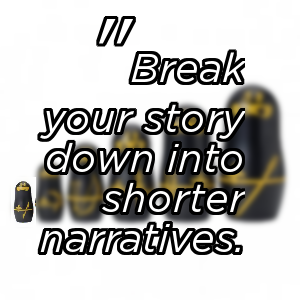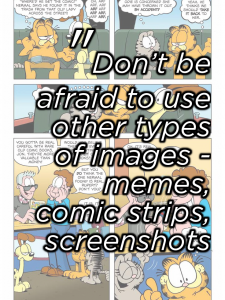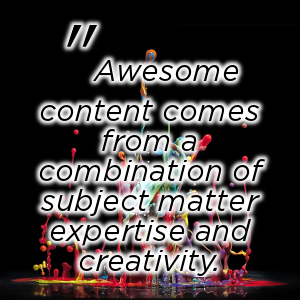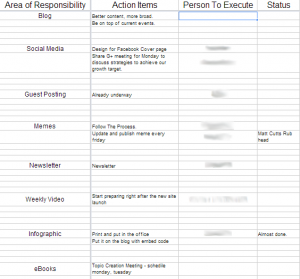I’ve talked about the importance of content in acquiring new leads and building your brand many times before. Today, I want to go a step further – I’m going to share with you how to do it. We studied our own current and previous strategies, and put together stories from brands and case studies. Using the information we gathered, we put together this 10-point content strategy for you to learn from.
Your Culture is Your Brand
Great content comes naturally if you are passionate about your industry, and you are dedicated to providing quality, up-to-date information to your customers. Remember that it all starts with your culture. If you set high standards for your brand, and you have an innate desire to find ways to improve your industry, then it will all show in the materials you release.
Storytelling: Your Customer is the Hero
People relate better to stories, and it works in the real world because your audience can see your emotions as you tell your story. Storytelling online is trickier because you and your market don’t see each other; therefore, showing sincerity and authenticity is just a little more challenging. This technique only works in the online world if you do two things: first, use the customer’s language, and second, make your customer the hero.
Using the customer’s language is easier than making your customer the hero. Communicating with your target audience becomes easier with market studies and a deep knowledge of your customers’ interests. To make your customer the hero, for example, you could highlight a common goal your market has, and position yourself as the enabler. Google’s Storytelling series is a good example of this. They take ordinary Internet users and show how they use Google Chrome and other Google products in their lives. Indirect marketing through storytelling goes a long way if you know how to pull at your audience’s heartstrings. Bragging can come later, and its only purpose will be to support your story.
Break It Down to Narratives
People who search for services online use the Internet because they have limited time. No one wants to read a lengthy story or watch a long video commercial these days. Break your story down into shorter narratives. This makes it easier for consumers to digest your message without being overwhelmed. It also gives you more materials to work with. Coca Cola’s Content 2020 series is a good example of breaking down a story into shorter, digestible narratives.
Neil McElroy’s Brand Management Rule
When McElroy was a brand manager in Procter & Gamble, he created this three-page memo saying each P&G brand should have its own brand manager, and each brand manager will be responsible for overseeing the development of their assigned brand. This way, brand managers will not confuse one brand for another, and make their advertising materials more distinct and targeted towards the right market.
This is difficult for smaller companies that have limited resources. What you can take away from McElroy’s model is this: if you want to focus your content, get the person with the most knowledge and experience with your brand on the team. They’re the ones in the best position to analyze and weigh whether or not your content will attract your target market.
Preach Your Brand – and Have Someone Else Do the Preaching
Influence marketing has the huge potential to make your content go viral. Associating your brand with a trusted third-party industry figure shows your market your authenticity and boosts their trust in you. Having a brand evangelist carry your brand message for you gives new life to your content. Soon their followers will be the ones preaching about your brand.
One of the best ways to do this is through guest blogging. Before you can submit your material to the owner of the blog, you need to establish a relationship first. Learn more about the owner, his interests, and the kind of writing he wants on their blog. Once you have established a connection, and you have awesome content written in the blogger’s style of writing, you can pitch it to him. Getting approval from a blogger you actually know is easier than asking a stranger for a guest post spot. Knowing the owner of the blog also gives you a better idea of the market you will be addressing. This way, you can deliver content with high viral potential more effectively.
Understanding Your Audience’s Mind
Learn the science behind consumer psychology. That’s a long discourse, but in the case of developing content strategy, the most important thing to understand is how consumers absorb content. Earlier, I pointed out that you should break down content into shorter narratives. This is because people can only absorb so much information at a time. Keep your paragraphs short, but straight to the point and packed with ideas. Anticipate their next move, and build your ideas based on what their decisions will be, say, five steps ahead.
 Adding Visual Dimension to Content
Adding Visual Dimension to Content
Readers want to have a rich browsing experience, and what better way to do this than adding images to your content? Images stimulate their eyes while giving you more creative freedom to convey your message. For some readers, images are more effective in getting your message across.
Just this week, we released a new infographic explaining our SEO methodology. We combined brief, straight-to-the-point content and images in a chart. By making a visual flow chart of our process, we show you exactly what happens at what stage of our campaign. This is much easier to understand than explaining the entire process in full text. Don’t be afraid to use other types of images – memes, comic strips, screenshots – just don’t forget to optimize them after to help crawlers read your visual content.
It’s All About Awesome Copy
In order to show your authority and authenticity in your industry, you should write awesome content. Awesome content comes from a combination of subject matter expertise and creativity. What you need is clear from this formula: a copywriter who understands your brand and your products/services well, and has fresh ideas on how to package your goods. A copywriter with these traits can produce unique, compelling, and consistent copy for all your marketing collaterals, whether it’s a piece of text, a script for your videos, copy for your ads and banners, or online PRs.
The perfect example of an awesome copywriter is the Father of Advertising himself, David Ogilvy.He has created many successful ads, including the revolutionary Shell ad, which was the first to explain what was in their gasoline, and Dove’s “Only Dove is one-quarter moisturizing cream,” which is still being used in Dove’s commercials to this day. His secret is in the language he uses in his copy. To quote him, “If you’re trying to persuade people to do something, or buy something, it seems to me you should use their language, the language they use every day, the language in which we think.”
Surviving Digital Darwinism through Attention Economy
The Internet may be evolving at a quicker pace than you can keep up with, but there are ways to survive this era of Digital Darwinism. Retaining your market’s attention long enough to get them to convert is the most important thing, but it is very challenging because of information overload online. This is where attention economy comes in. Treating attention as a rare commodity allows you to plan a content strategy that places the attention of a specific audience where it will stay the longest, and where it can bring in more attention from other people. Offering them relevant content is key to keeping their attention.
News feeds, social graphs, and filters are examples of tools falling under this category. People subscribe only to news feeds they find relevant and interesting. Social graphs track users’ browsing history and online network to refine a person’s search experience, while filters help various online platforms control and customize their search results. Making these tools available for your visitors in exchange for their attention helps you survive Digital Darwinism.
Prepare Your Commandments: The Brand Style Guide
Once you’ve established what you want your brand to be and how you want to represent it, create a brand style guide for all current and future employees. Branding consistency helps retain and maintain your market’s trust, and over time, many different people will provide collateral for your brand. The brand style guide ensures all the teams who will collaborate with you maintain the branding you originally developed. This way, you can replicate whatever early success you achieve with your brand even if the teams change. Make sure to update your brand style guide each time you make major changes in your methodology and brand messaging.
We’ve tried and tested this 10-point content strategy, and we’ve seen great success in the campaigns we handle. The good thing about it is you can easily add more to it or modify elements to make your methodology unique.
Contact your account manager today to learn more about our services, or sign up for your free account and become our partner today. Keep checking back for more tips and updates!









